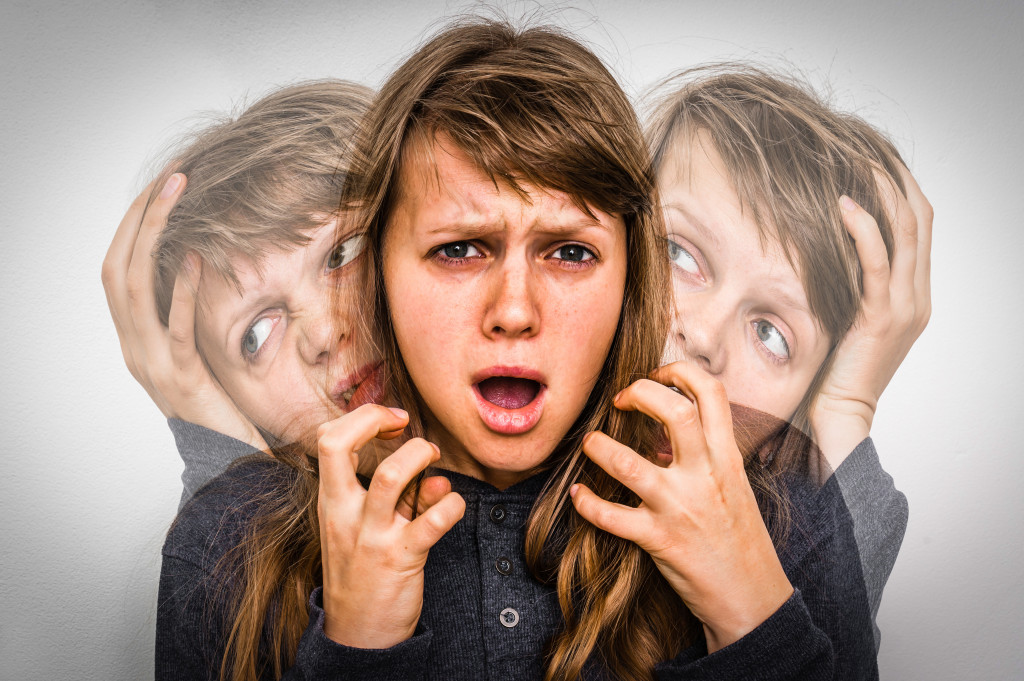Bipolar personality disorder, formerly known as manic-depressive illness, is centered around a person’s mood. People with this disorder experience intense highs, called mania, and deep lows, called depression. The symptoms of bipolar disorder can range from mild to severe and can have a significant impact on all aspects of life. It’s estimated that about 1.6% of the American population have this disorder, so if you or someone you know is struggling with bipolar disorder, it’s essential to understand the condition and how it can be managed. Read on for an overview of what you need to know about bipolar disorder.
What are the Symptoms?
The primary symptom of bipolar disorder is extreme mood swings between mania and depression. Mania episodes may include feeling highly energized or “high,” impulsive behavior, racing thoughts, decreased need for sleep, extreme irritability, or even delusions (false beliefs). Depression episodes may include feeling very sad or hopeless; not being interested in activities that used to bring joy; difficulty concentrating; sleeping too much or too little, and physical aches or pains. It’s also common for individuals with bipolar disorder to have periods of stability where their moods are relatively neutral.
How is it Diagnosed?
If you suspect that you or someone you know may have bipolar disorder, the first step is to consult a healthcare professional specializing in mental health conditions, such as a psychiatrist or psychologist. Your doctor will conduct a physical exam and ask questions about your medical history and symptoms before making a diagnosis based on criteria outlined in the DSM-5 (Diagnostic and Statistical Manual of Mental Disorders). Medication may be prescribed if necessary.

Risk Factors
BPD doesn’t happen without any reason. Here are some risk factors common with BPD.
Genetic Risk Factors
Research indicates that genetic factors play a significant role in the development of the bipolar disorder. In addition, studies suggest that those with first-degree relatives, such as siblings or parents, who suffer from the condition are more likely to develop it themselves. However, this does not necessarily mean that if someone has family members with bipolar disorder, they will also set it; it simply increases their risk.
Environmental Risk Factors
Environmental factors are also thought to contribute to an individual’s risk of developing bipolar disorder. For example, stressful situations, such as a significant life change, the death of a loved one, or financial difficulties, can trigger manic or depressive episodes in those predisposed to them. Additionally, substance abuse can increase an individual’s risk of developing bipolar disorder; alcohol and certain drugs can worsen symptoms or even trigger an episode.
Neurobiological Risk Factors
Recent research suggests that there may be specific neurobiological differences between individuals with and without bipolar personality disorder. For example, studies have found differences in brain structure and function among people with type 1 bipolar compared to those without it. Additionally, some scientists believe that neurotransmitter systems (chemical messengers) could be involved in developing this condition and other forms of mental illness. Further research is necessary to understand these potential neurobiological causes of bipolar personality disorder.
Treatments For Bipolar Personality Disorder
Thankfully, there are many ways to treat BPD, even if it can’t be cured. Here are some of those ways.
Medication
The first step in treating bipolar disorder is often medication. Medications are used to reduce the intensity of episodes, improve cognitive functioning, and treat any underlying medical conditions. Antipsychotics are often prescribed to help with mania or depression, while antidepressants can be used to treat depressive episodes. Mood stabilizers like lithium may also be prescribed to help prevent future manic or depressive episodes.
Ketamine
This particular substance is new and very promising. It can’t cure BPD, but it can deal with its symptoms. For example, a robust ketamine treatment for depressive symptoms can help shut down a manic episode, lowering the risk of self-harm. Doing this can help reduce the chances of death from this disorder.
Therapy
Therapy is an integral part of treating bipolar disorder. Generally speaking, therapy helps people better understand their condition and develop coping strategies for managing their symptoms. For example, cognitive Behavioral Therapy (CBT) has been proven effective in helping people with bipolar disorder learn how to identify negative thought patterns and replace them with more positive ones. Other types of therapy, such as interpersonal therapy (IPT), may also help people build stronger relationships with family members and friends who can provide support during difficult times.
A bipolar personality disorder affects millions of people worldwide—but understanding this condition is key to managing its symptoms effectively so that life can still be enjoyable despite its challenges. Knowing more about what the situation entails—from its symptoms to diagnosis methods—can help equip those affected with the knowledge they need to regain control of their well-being. With proper care from healthcare professionals, along with self-care strategies like healthy habits and stress management techniques, those living with bipolar disorder can look forward to full lives once again!

